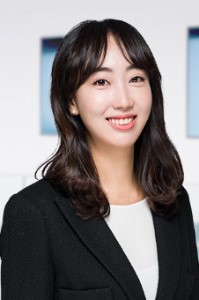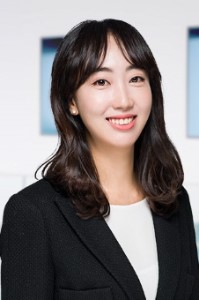Product Liability & Safety 2024
South Korea
1. Product Safety
1.1 Product Safety Legal Framework
The following laws may be applicable to a product safety case.
- The Product Liability Act – In the event of damage to life, body or property due to a defect in the manufacturing, design or indication of a product, a person suffering from such damage may file a claim for compensation for damages against the relevant manufacturer under this Act.
- The Framework Act on Consumers – This Act regulates general matters on the duties of consumers, the state and business operators to promote the rights and interests of consumers. Under this Act, the state has the duty to specify matters to be complied with in supplying consumers goods, obligations of indication/advertising, etc of business operators and may recommend or compel the removal, destruction, etc of goods that cause, or may cause, harm, to the lives, bodies and properties of consumers.
- The Framework Act on the Safety of Products – This Act provides for basic matters to ensure the safety of products supplied to consumers. Under this Act, a safety investigation into a product may be requested to ensure the safety of such product, and a product that causes, or may cause, harm to the lives, bodies and properties of consumers shall be recommended or compelled to be removed or destroyed.
- The Serious Accidents Punishment Act – This Act provides for punishment against business owners, responsible managing officers, public officials and corporations that cause casualties in breach of their obligations to take safety and health measures while handling materials or products harmful to human bodies.
- The Motor Vehicle Management Act, concerning motor vehicles.
- The Chemical Substances Control Act, concerning chemical substances.
- The Food Sanitation Act, concerning foods and food additives.
- The Electrical Appliances and Consumer Products Safety Control Act, concerning the safety management of electrical appliances and consumer products.
1.2 Regulatory Authorities for Product Safety
There are different regulators under different applicable laws, and the scope of authority that may be exercised under such law also varies.
- In relation to safety and consumer protection for general products, the Korea Fair Trade Commission (KFTC) and the Korea Consumer Agency (KCA) and the Ministry of Trade, Industry and Energy are the main regulatory bodies exercising their authorities under the Framework Act on Consumers and the Framework Act on the Safety of Products. For example, the regulatory bodies may decide to recall a product that causes, or may cause, harm to the lives, bodies and/or properties of consumers. KCA also provides dispute-mediation services for consumers.
- The Ministry of Land, Infrastructure and Transport is responsible for several motor vehicle-related duties under the Motor Vehicle Management Act. These include vehicle registration, imposing operational restrictions, setting safety standards, and certifying vehicles. The ministry also addresses manufacturing and pre-sale defects by taking corrective measures or issuing recalls.
- The Ministry of Environment oversees the designation and management of hazardous chemical substances and grants authorisation to businesses handling these substances in accordance with the Chemical Substances Control Act.
- The Ministry of Food and Drug Safety is tasked with establishing criteria and standards for foods and food additives. It authorises food-related businesses and can issue corrective orders, mandate destruction, suspend operations or cancel business permits for harmful foods under the Food Sanitation Act.
- The Ministry of Trade, Industry and Energy, under the Electrical Appliances and Consumer Products Safety Control Act, designates safety certification bodies for electrical appliances and consumer products. It manages products requiring safety verification and can order improvements, destruction, removal or suspension of sales for products lacking safety certification.
1.3 Obligations to Commence Corrective Action
Under various applicable laws, if a product is found to have safety defects, the government can order the business operator to take corrective actions, which must be complied with.
The Framework Act on Consumers stipulates that businesses must report defects in goods and voluntarily remove products that could harm consumers’ lives, bodies or properties (Articles 47 and 48). The state can also recommend or mandate the removal or destruction of such goods, with businesses obligated to comply (Articles 49 and 50).
Specific laws governing motor vehicles, foods, electrical appliances and consumer products include provisions for the public announcement of defects and the implementation of corrective measures. Business operators are required to announce defects directly or, alternatively, the state will do so.
1.4 Obligations to Notify Regulatory Authorities
The Framework Act on Consumers and the Framework Act on the Safety of Products outline different reporting obligations for businesses concerning product defects.
The Framework Act on Consumers mandates businesses to report not only actual harm caused by defective products but also potential risks, adhering to a “risk-based report” principle. This obligation requires businesses to report any defects they become aware of, without a specified time limit. Under the act, businesses must report defects in manufactured, imported, sold or supplied goods to the relevant central administrative agency in the following scenarios, unless the goods are voluntarily removed:
- if the business discovers that the goods have serious defects in manufacturing, design, labelling, etc, which cause or could cause harm to consumers’ lives, bodies or properties; or
- if the business takes measures because similar goods with defects have been found in a foreign country, or if it is discovered that a foreign business has taken such measures:
- removal, destruction, etc, under a recommendation or an order of removal, destruction, etc, from a foreign government; or
- voluntary removal, destruction, etc.
The Framework Act on the Safety of Products requires immediate reporting by business operators when a product distributed in the market causes specific types of accidents, regardless of whether the product has a significant defect. This “incident-based reporting” mandates that businesses report the product’s name, accident details, sales quantity, and other relevant information to the head of a central administrative agency:
- fatal accident;
- accident that caused an injury requiring at least four weeks’ medical treatment in a medical institution under the Medical Service Act;
- fire or explosion; or
- other accidents caused repeatedly by the same product.
1.5 Penalties for Breach of Product Safety Obligations
Business operators who fail to comply with their obligations under relevant consumer safety laws face various penalties, including criminal punishment (imprisonment and fines), fines for negligence, and administrative actions such as suspension or cancellation of business licences. However, in practice, non-compliant operators are typically subject to corrective orders or fines for negligence rather than the more severe penalties.
2. Product Liability
2.1 Product Liability Causes of Action and Sources of Law
In Korea, product liability claims can be raised under various laws, depending on the subject matter. They include the following:
- the Civil Act;
- the Commercial Act;
- the Product Liability Act (PLA);
- the Framework Act on Consumers;
- the Framework Act on the Safety of Products;
- the Motor Vehicle Management Act; and
- the Chemical Substances Control Act (K-REACH).
Most claims are filed under the PLA or the Civil Act’s tort provisions.
The PLA predominantly governs product liability litigation, holding manufacturers liable for damages to life, persons and property caused by product defects, excluding damages to the product itself (Article 3(1)). Claims under the PLA are treated as strict liability offences, meaning the manufacturer is liable regardless of fault. In contrast, claims under the Civil Act or Commercial Act require proof of fault.
2.2 Standing to Bring Product Liability Claims
In Korea, product liability claims can be brought by parties who have suffered damages to life, persons or property due to a product defect. Heirs of a deceased individual can also file claims on behalf of the deceased. Additionally, regulations may grant third parties the right to seek indemnity, allowing them to bring claims on behalf of the injured party.
It is common for insurance companies to pay out claims to insured individuals and then seek indemnity from manufacturers. A notable example is an ongoing appellate court case where the National Health Insurance Service has filed an indemnity claim against tobacco manufacturers after covering medical expenses for smokers.
2.3 Time Limits for Product Liability Claims
The Product Liability Act (PLA) in Korea sets dual statutes of limitations for bringing product liability claims. A claim must be filed within the earlier of:
- ten years from the delivery of the defective product; or
- three years from the claimant’s discovery of the damages and relevant liabilities.
For damages caused by harmful substances or those that become apparent after a latent period, the ten-year statute of limitations is calculated from the date the damage occurred. The statute of limitations expires when either of these periods lapses.
2.4 Jurisdictional Requirements for Product Liability Claims
In Korea, jurisdiction for lawsuits under the Product Liability Act is determined by the Civil Procedure Act, as the PLA does not specify jurisdictional rules. According to the Civil Procedure Act, a lawsuit falls under the jurisdiction of a court where the defendant’s general forum is located (Article 2). Additionally, a lawsuit concerning a tort may be filed at the place where the tort occurred (Article 18(1)). Since a lawsuit under the Product Liability Act is considered a tort lawsuit, it can be filed either at the court where the defendant’s general forum is located or at the place of the tort.
2.5 Pre-action Procedures and Requirements for Product Liability Claims
There are no procedures required to be completed prior to product liability claims in Korea. However, under the Framework Act on Consumers, individuals have the option to pursue remedies for damages caused by the use of goods through the Korea Consumer Agency (KCA). Additionally, disputes between consumers and business operators can be mediated through the Mediation Commission. These procedures, outlined in Articles 55 to 59 and Articles 65 to 68 of the Framework Act on Consumers, provide alternative avenues for resolving disputes before resorting to formal legal action.
2.6 Rules for Preservation of Evidence in Product Liability Claims
There are no rules for the preservation of evidence applicable only to product liability cases in Korea. However, under the Civil Procedure Act, provisions enable courts to conduct examinations of evidence when necessary. If a situation arises where evidence might become unusable without prior examination, the court has the authority to conduct such examinations either on its own initiative or upon request from a party (Articles 375 and 370). This applies to all types of evidence, including witness testimony, documentary evidence, expert opinions and examinations of parties involved. Thus, parties involved in public liability cases can utilise these provisions to ensure the preservation and examination of evidence critical to their claims or defences.
2.7 Rules for Disclosure of Documents in Product Liability Cases
Korea does not have a discovery system similar to the system in the US. It is, however, possible to make a request to the court to order the other party to produce specific documents or make an application for inquiry of facts. It is possible for a party possessing the requested documents to refuse to produce them, claiming that they contain trade secrets. In such cases, failure to comply with the court’s order to produce documents without a justifiable cause could lead to the court accepting the veracity of the other party’s claims regarding the contents of the documents.
2.8 Rules for Expert Evidence in Product Liability Cases
There are no rules for expert evidence specific to product liability cases. Under the Civil Procedure Act in Korea, parties involved in legal proceedings have the option to apply for expert testimony to obtain opinions from individuals possessing necessary knowledge and experience.
Upon designation as an expert witness, the individual undergoes examination by the presiding judge. The presiding judge may then have the expert witness state their opinions either verbally or in writing. Additionally, parties can also file applications for expert witnesses regarding facts known from special knowledge and experience (Articles 333 to 342).
2.9 Burden of Proof in Product Liability Cases
In Korean product liability cases, claimants typically bear the burden of proving a product defect. However, if certain conditions are met – such as the accident occurring under normal product use, within the manufacturer’s control and unlikely without the defect – the existence of the defect and its link to damages are presumed under the revised Product Liability Act, which became effective in 2018 (Article 3-2 of the PLA). This amendment lightens the claimant’s burden, as previously they had to prove the defect, manufacturer negligence, damages and causation.
2.10 Courts in Which Product Liability Claims Are Brought
As stated in 2.4 Jurisdictional Requirements for Product Liability Claims, a lawsuit may be brought to a court having jurisdiction under the Civil Procedure Act. As a trial by jury is not available in civil cases in Korea, a product liability case is decided by judges. A case with a claim amount of KRW500 million or smaller is decided by a single judge, while a case with a claim amount exceeding KRW500 million is decided by a three-judge panel.
Compensation for damages is determined according to Civil Act provisions, allowing for reimbursement of direct (eg, property damage, medical expenses), indirect (eg, loss of expected benefits, wages) and emotional distress damages.
Punitive damages are generally not recognised in Korea, except under specific circumstances outlined in the PLA. Courts may award exemplary damages, not exceeding three times the actual damages, if the manufacturer was aware of the defect but failed to prevent harm to life or serious bodily injury. Additionally, the Serious Accidents Punishment Act, effective from 27 January 2022, holds business operators liable for damages resulting from “Serious Civic Accidents”, with compensation amounting potentially up to five times the actual damages incurred.
2.11 Appeal Mechanisms for Product Liability Claims
In Korea’s legal system, the three-trial system allows for appeals against final judgments rendered in lower courts. An appeal (second trial) can be filed against a final and conclusive judgment from the first trial, and a final appeal (third trial) can be lodged against a final and conclusive judgment from the second trial.
During the first and second trials, both factual examination and legal judgments are conducted. However, in the third trial, the judgment is based on whether the decision from the second trial violates the law, without revisiting facts or re-examining evidence.
According to the Civil Procedure Act, appeals or final appeals must be filed within two weeks of receiving the written judgment. For final appeals, a written statement of grounds must be submitted within 20 days of receiving notice of the litigation record from the court of final appeal.
2.12 Defences to Product Liability Claims
The Product Liability Act (PLA) in Korea outlines defences that manufacturers can utilise to counter product liability claims (Article 4(1) of the PLA).
- Non-supply of the product – Manufacturers can be relieved from responsibility by proving they did not supply the product in question.
- Unidentifiable defect – If the defect was not discoverable by the state of science or technical knowledge at the time of supply, manufacturers may be exempt from liability.
- Compliance with regulations – Manufacturers can argue that the defect arose from compliance with laws or regulations at the time of supply.
- Defects in raw materials or components – For raw materials or components, manufacturers can claim that the defect stemmed from the design of the final product or instructions provided by the manufacturer of the final product using these materials or components.
Additionally, manufacturers can defend against product liability claims by disproving the existence of a defect or the causation between the defect and the damage suffered. This entails demonstrating the following:
- the product was manufactured according to the intended design (for manufacturing defects);
- the product meets safety standards expected given current technology and economic feasibility (for design defects); or
- adequate explanations, instructions and warnings were provided to users, addressing anticipated dangers (for indication defects).
2.13 The Impact of Regulatory Compliance on Product Liability Claims
The court does consider adherence to regulatory requirements in relation to breach of a product safety regulation. However, such consideration will be limited to the breaches that are found to have causal relationship with the damages.
2.14 Rules for Payment of Costs in Product Liability Claims
In Korean litigation, the general principle dictates that the unsuccessful party bears the costs of the proceedings. If only a portion of a claim is recognised by the court, the distribution of costs is determined based on the ratio of the recognised claim. However, not all costs may be recoverable, as the amount of legal fees that can be reclaimed is subject to limitations set forth in court rules.
Lawyers may also charge a percentage uplift on their costs, though this is subject to negotiation and agreement between the lawyer and the client.
2.15 Available Funding in Product Liability Claims
In Korea, the claimant typically funds legal costs, but the court may grant legal aid to parties unable to pay upon request or at its discretion. To qualify, a party must demonstrate financial need, and legal aid can include deferred payment of court and attorney fees, as well as exemption from court fee deposits.
The Korea Legal Aid Corporation offers legal assistance, including trial representation, at minimal fees or free of charge to financially disadvantaged individuals.
While there is no specific prohibition on third-party litigation funding, entrusting litigation to a third party in property disputes is generally not allowed unless under specific circumstances and in compliance with the Trust Act. Contingency or conditional fee arrangements are permitted without a maximum limit, and parties are not obligated to disclose such arrangements to the opposing party.
2.16 Existence of Class Actions, Representative Proceedings or Co-ordinated Proceedings in Product Liability Claims
While Korea lacks a general class action system in civil proceedings, the Securities-Related Class Action Act addresses specific illegal acts, such as false or insufficient securities filings, effective since January 2005.
Korea employs an “appointed-party” system, somewhat akin to class actions but with differences. Only those participating in the trial benefit from court findings and awards. While multiple persons can join a lawsuit if their rights and obligations are intertwined, the court’s decision applies only to the involved parties, distinct from class actions. In product liability cases involving multiple victims, it is common for victims to appoint one legal representative to litigate on their behalf, streamlining legal proceedings.
2.17 Summary of Significant Recent Product Liability Claims
Significant recent product liability claims include the following.
- Agent Orange Case – Since early 2020, Vietnam War veterans and widows have refiled the Agent Orange case in Korean courts, with two additional cases filed in 2022. The cause of action remains similar to previous filings.
- NHIS Tobacco Case – The National Health Insurance Service (NHIS) filed a claim against tobacco companies, which was dismissed by the trial court on 20 November 2020. NHIS appealed this decision, citing a lack of legal basis for direct claims and insufficient evidence of causation between smoking and lung cancer. The court of appeal is currently deliberating, with contentious issues surrounding the hazards of additives.
- Humidifier Disinfectant Case – Victims who suffered lung-related injuries and deaths after using humidifier disinfectants filed claims against manufacturers in August 2014. Initially, the trial court held manufacturers liable but dismissed government liability. However, in February 2024, the court of appeal found the government accountable, criticising its handling of toxicity evaluations and neglect over nearly a decade. The case is pending review by the Supreme Court.
3. Recent Policy Changes and Outlook
3.1 Trends in Product Liability and Product Safety Policy
In recent years, there has been a notable shift towards implementing more consumer-friendly regulations in Korea. This includes provisions such as the presumption of defect or easing the burden to prove causation, which are also reflected in court decisions. The heightened concern for consumer safety is expected to drive further legislative changes and court rulings in this direction.
Future amendments to the Product Liability Act (PLA) may impose the burden to prove product defect on the manufacturer or introduce provisions allowing group action in product liability cases. While the burden to prove causation is likely to remain with the claimant, there is the potential for legislation or court decisions to accept presumptions of causation or statistical causation analysis in the future.
3.2 Future Policy in Product Liability and Product Safety
The Korea Department of Justice previously proposed a class action bill, which underwent review by the Ministry of Government Legislation in 2020. However, the bill was abolished with the constitution of a new National Assembly. Under the proposed bill, groups of 50 or more people would be eligible for class action regardless of industry. It aimed to ease victims’ burden of proof and introduce a discovery system akin to that in the US, promising a more favourable legal environment for victims upon passage.
Similarly, a bill on the Framework Act on Artificial Intelligence (AI) was introduced to the National Assembly around July 2021 but failed to pass and was abolished by the new National Assembly. Despite this setback, there is the expectation of a new bill reflecting international trends and discussions on AI regulation, especially considering the establishment of the EU AI Act. The previous bill focused on restrictions on AI technology, products or services causing harm to public safety without addressing manufacturer liability. However, discussions on acknowledging product liability for AI or software suggest that a new bill may incorporate such provisions.
Shin & Kim LLC
D-Tower (D2)
17 Jongno 3-gil
Jongno-gu
Seoul 03155
Korea
+82 2 316 1749
+82 2 756 6226
shinkim@shinkim.com www.shinkim.com
Trends and Developments
Evolving Regulatory Framework
In recent years, the regulatory framework governing product liability and safety in Korea has undergone significant evolution, driven by a growing emphasis on consumer protection and the need to address emerging challenges in product safety. This trend is reflected in both legislative reforms and judicial decisions that increasingly prioritise the interests of consumers.
Legislative Reforms
One of the key developments in this regard is the ongoing strengthening of the Product Liability Act, which serves as the cornerstone of product liability law in Korea. Amendments made to this act in 2018 introduced several important provisions aimed at enhancing consumer safeguards. For instance, the introduction of a new provision allowed for the presumption of causal relationships between product defects and resulting damages in certain cases. Moreover, manufacturers found guilty of intentionally neglecting product defects can now face compensation claims of up to three times the actual damages incurred, providing a significant deterrent against such practices.
The Framework Act on Product Safety, serving as the fundamental legislation governing recalls, introduced several key provisions aimed at enhancing recall procedures and ensuring compliance. Specifically, it mandated that business operators who receive recall orders must prepare and submit detailed recall plans, a requirement implemented in 2019. Additionally, the act established explicit authorisation for authorities to inspect the status of recall compliance, providing oversight to ensure adherence to recall protocols. Moreover, it expanded and reinforced penalties for non-compliance with recall orders, reflecting a commitment to bolstering accountability and consumer protection in product safety matters.
Similarly, the enactment of the Act on the Punishment of Serious Accidents, etc in 2021 has reverberated profoundly throughout Korean society, particularly concerning major industrial accidents. This legislation encompasses provisions not only for serious industrial incidents but also for disasters affecting citizens. Where such events lead to at least one fatality or ten or more injuries or illnesses due to defects in design, manufacturing, installation or management of specific raw materials, products, public facilities or transportation means, they are classified as serious disasters. Under this act, business owners responsible for such incidents face criminal penalties, and compensation for damages, extending up to five times the actual damage incurred, is mandated.
Furthermore, there is a growing inclination to introduce specialised legislation aimed at determining causal relationships and quantifying damages based on epidemiological correlations, particularly in response to large-scale disasters that garner significant social attention. A notable example of this trend is the Special Act on Remedy for Damage Caused by Humidifier Disinfectants, which underscores the government’s commitment to addressing public health concerns arising from widespread incidents involving consumer products.
Judicial Decisions
In tandem with legislative reforms, Korean courts have increasingly adopted a consumer-centric approach in adjudicating product liability cases. Courts now demonstrate a greater willingness to find causation even in instances where the link between product defects and resulting damages is not immediately clear. This approach is particularly evident in cases concerning defects in products related to occupational safety, worker health or environmental pollution, where courts actively review the causation issue. However, in matters of general product liability, evaluating how significantly the courts have shifted their stance on proving defects or causation compared to the past is challenging. Nonetheless, it appears that courts now prioritise fairness and equity in individual cases, indicating a subtle but noticeable change in their approach to product liability disputes.
Despite these advancements, challenges persist in certain areas of product safety regulation. Issues such as rapid technological advancements in automotive engineering, incidents of battery fires in electric vehicles, concerns regarding automobile exhaust emissions, and ongoing litigation related to tobacco products and chemical safety continue to pose significant challenges for regulators and industry stakeholders alike.
For example, instances of sudden acceleration in automobiles have been frequently raised, although no manufacturer has yet been held liable for such incidents in civil judgments. However, in criminal cases, some defendants have been acquitted based on claims of sudden acceleration rather than negligence. Although a bill requiring manufacturers to disprove defects in cases of sudden acceleration was proposed, it has not yet been passed.
Moreover, incidents related to battery fires, particularly in automobile batteries and Energy Storage Systems (ESS), have been on the rise. Parties involved in such cases often opt for settlement agreements rather than awaiting final court rulings. Regarding automobile exhaust gas and tobacco lawsuits, no definitive rulings have been made on illegal acts or causal relationships involving manufacturers.
Legislative response
In response to these challenges, policymakers are actively exploring measures to strengthen existing regulatory frameworks and enhance consumer protections. Efforts to bolster tobacco control measures, including the recent 2023 bill aimed at analysing and disclosing the ingredients of tobacco products, highlight the government’s commitment to safeguarding public health in the face of evolving risks.
Furthermore, revisions to the Chemical Substances Control Act in 2015 underscore Korea’s commitment to aligning its chemical safety regulations with international standards, particularly those set by the European Union. These efforts reflect a broader recognition of the importance of harmonising regulatory practices across global markets to ensure the safety and integrity of consumer products.
Conclusion
In conclusion, the evolving landscape of product liability and safety regulation in Korea reflects a concerted effort to adapt to changing consumer needs and emerging risks. While significant progress has been made in strengthening legal frameworks and enhancing consumer protections, ongoing challenges underscore the need for continued vigilance and proactive measures to safeguard public health and well-being. Through collaborative efforts between government, industry and civil society stakeholders, Korea aims to uphold the highest standards of product safety and accountability, ensuring that consumers can confidently access and use a wide range of products without compromising their safety or well-being.
Shin & Kim LLC
D-Tower (D2)
17 Jongno 3-gil
Jongno-gu
Seoul 03155
Korea
+82 2 316 1749
+82 2 756 6226
shinkim@shinkim.com www.shinkim.com








